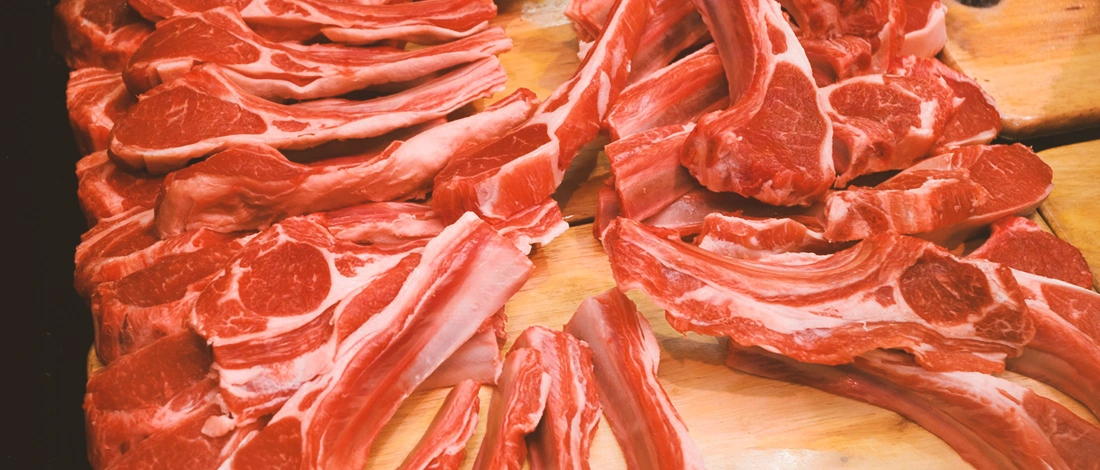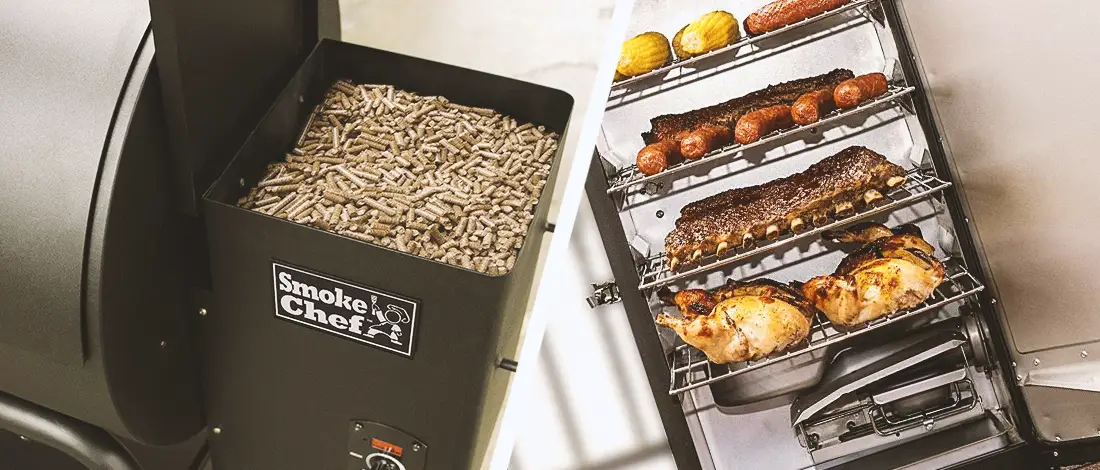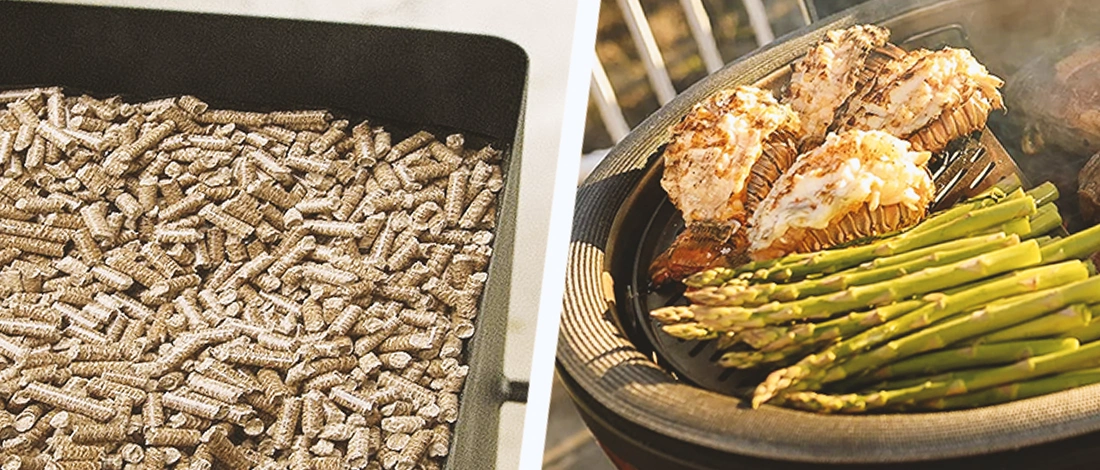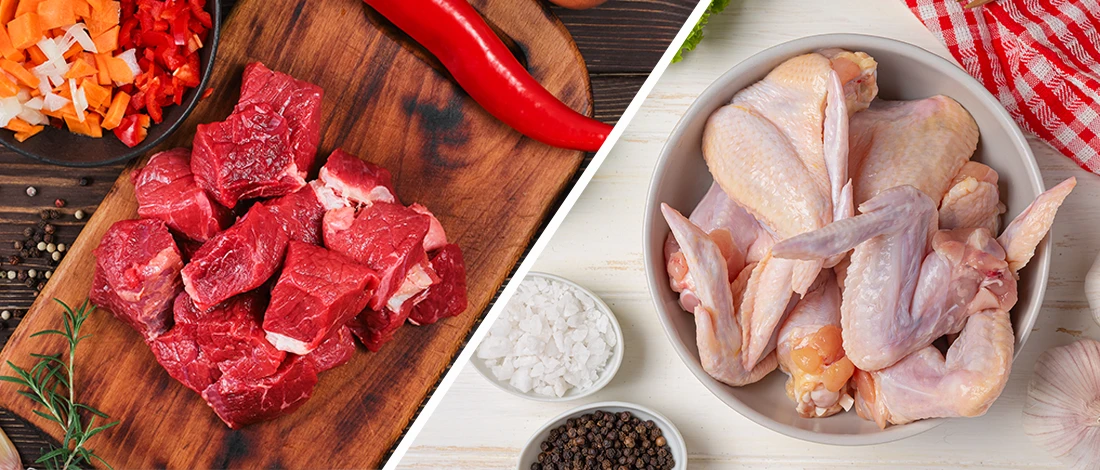Shipping meat can be easy, but it can also be a long, tiring process if you don't know what you're doing.
For the past few years, I have visited various shipping agencies and researched online to learn the safest ways to ship meat effectively, how to package meat, and find a better agency for your shipping process. I have summarized everything in this article.
Continue reading to get to know how to ship frozen meat.
Quick Summary
- Shipping meat requires an effective insulation system, high-quality packaging, and proper cooling methods.
- Cold packs and dry ice are commonly used to maintain temperature during transit.
- Dry ice shipments are ideal when combined with high-performance enclosed pallet boxes like the Thermal box.
Shipping Meat
The process of shipping perishables can vary widely from product to product. There is only one opportunity to get this right when it comes to shipping frozen meat.
Selecting the wrong packaging material can easily lead to food thawing, meaning that it will spoil before it reaches its final destination.
In case you were wondering what an ideal meat package should look like, testing the packages from some of the best meat shipping companies in the US is a good starting point.
How Do Delivery Meal Boxes Keep Meat Cold?

Delivery meal boxes keep meat cold by incorporating dry ice or cold packs that maintain the box's temperature. Because they normally come in conventional sizes, delivery meal boxes are a convenient packaging solution.
They limit the bacterial growth that might cause sickness when ingested by keeping the meat cold. Some containers may need dry ice or cold packs to maintain the temperature required.
The boxes also come in various thicknesses, allowing you to select depending on your individual needs for each delivery. The thicker the box, the more insulated it will be, which means you won't require as many ice packs and as much dry ice.
Customers' satisfaction is crucial, so it is critical to ship frozen meat properly.
5 Key Steps to Shipping Meat
Here are the steps you can follow to ship meat correctly.
1. Utilize an Effective Insulation System
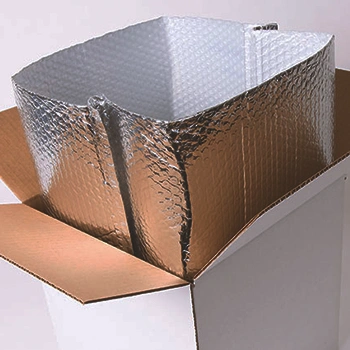
Using the proper meat packing materials is critical when keeping the shipment cold. I suggest you use insulated container liners, which have several benefits over other types of temperature-control containers, like molded coolers.
Insulated liners are reflective foam container inserts that provide high-performance heat regulation and may be quickly installed within a cardboard box and packed with perishable food products.
These customized liners are handy since they offer both conductive and reflective insulation.
Reflective container liners are tiny and space-efficient compared to alternative temp-control packaging, saving up important space and effort in your operation.
2. Choose a High-quality Packaging for Meat
To maintain the meat temperatures stable, you should ensure that the outside temperature doesn't encroach on the packing and that the coldness cannot get out of the packing material.
Otherwise, the heat of the frozen meat may gradually rise throughout shipment. As an outcome, the meat may reach a temperature of more than 5°, which may be detrimental to the value of the meat.
You can keep the frozen meat at a steady temperature by using high-quality packing alternatives, especially when it comes to grilled meat.
Frozen meats are shipped in warm weather, and the shipment undergoes several temperature changes. You need to ensure that your meat is both safe and cool.
3. Keep the Meat Cool
Once you've figured out how to keep external heat from your packaging when shipping frozen meat, you'll need to think about the coolants that could be needed to maintain your product cold for the requisite transit time.
Cold packs and dry ice are your options here. The following factors will determine the amount required:
- The weight of the meat being sent.
- The thickness of the insulating material.
- Temperatures in the environment.
- Duration of transit.
Here are 2 ways to keep the meat cool during shipment so it arrives to the customers while still fresh.
Using Cold Packs for Shipping

Introducing cold packs saves you the trouble of managing a hazardous material and the associated labeling procedures.
It is crucial to remember that cold packs may not maintain shipping frozen meat to be frozen. So as a general rule, the insulated container should be cooler than the product. As a result, cold packs are ideal for carrying fresh meats.
Water-based cold packs generally have a phase transition or melting threshold of roughly 30°C [1].
Since they do not attain extremely low degrees like dry ice, they may not cause temperature harm to goods that are susceptible to freezing.
Cold packs may typically keep the frozen meat between 2 and 8°C, based on its size and initial temperature [2].
Cold packs may help extend the life of meat in shipment and give more extensive coverage.
Another advantage of using cold packs is that they may be put at ambient temperature to assist in protecting delicate items from freezing during the colder months.
Using Dry Ice for Shipping

The alternative approach is to ship meat with dry ice shipments, which is ideal when combined with high-performance enclosed pallet boxes like the Thermal box.
The important criterion for efficiency is that the longer the dry ice is near the frozen meat, the longer the meat will stay frozen.
Extreme caution should be exercised when handling dry ice because the package might be hazardous when the weight restriction is exceeded [3].
“You need to make sure dry ice doesn't adversely affect the quality of the shipped product.”
- Quint Marini, Package Engineering Manager at UPS
To ship meat with dry ice, you need:
- Packs of dry ice
- Container that is insulated
- Box made of cardboard
- Bag made of plastic (2 mils)
- Packing peanuts
Here are the steps you need to follow to ensure the safe delivery of your meat package:
- Before shipment, pre-freeze the meat.
- Incorporate the insulated container within the corrugated box.
- Add two layers of a 2-mil plastic bag.
- Put the dry ice chunks in place.
- Place the frozen meat on top of the dry ice.
- Over the meat, place packing peanuts.
- Because dry ice must air, do not completely seal the liner bags (if you used them).
- Include an insulated container cover.
- Close and seal the corrugated box tightly.
- Apply the necessary labels.
- Add insulated container lid.
- Close and securely tape the corrugated box.
- Apply the required labeling.
4. Padding and Packing Meat to Minimize Movement
For meat shipping, vacuum packing is employed since it removes oxygen and aids in color conservation.
Filling the additional space in your box with paddings can help prevent banged meat. Add enough bubble wrap to the space on the cold box to support the items.
Place the meat mostly in the middle of the shipping box, 2 inches away from the sides. Package your meat in a robust corrugated cardboard box and use packing tape to close all seams from bottom to top.
Also Read: Vacuum-Sealed Meat Shelf Life
5. Choosing a Delivery Management System

After the packing has been successfully handled, it's time to focus on the shipping aspects.
Meats may be securely transported overnight or on the 2nd Day by United States Postal Service (USPS) priority mail express [4].
You can also use US Mail, FedEx, UPS, and other delivery companies. To retain the frozen meats as frozen, they must be put in a Styrofoam container.
Shipping time is crucial when shipping perishable items, especially if coolants are used. It's critical that the meat shipments arrive on schedule and are dispatched overnight or through expedited delivery.
Shipments should be scheduled early that week. In that way, the shipments aren't stuck someplace over the weekend. Note that holidays might also influence the delivery procedure.
You should calculate shipping prices for all weight situations and compare them with various shipping firms. You may be eligible to negotiate certain transportation prices if you anticipate substantial shipping volumes.
Some customers may not need overnight shipment. In this instance, you may wish to establish the efficient delivery time possible while ensuring the products' safe delivery.
To ship frozen meat safely, not every delivery must be sent overnight. When mastering how to transport meat, two-day delivery may be more cost-effective. This is why optimizing delivery routes is essential.
It would be best if you had fulfillment sites on both sides when shipping across the country. This allows you to send 2-day ground while keeping your shipping prices low enough to earn a profit.
Shipping via the international air transport association is not feasible due to the high expenses.
Related Articles:
FAQs
Can Meat Be Mailed?
Yes, meat can be mailed in the United States if it meets US Department of Agriculture requirements (USDA).
How Long Does Dry Ice Last For Shipping?
Dry ice for shipping can last between 12 to 24 hours inside the boxes.
How Do You Ship Refrigerated Meat?
You ship refrigerated meat by keeping the meat in a Styrofoam cooler to keep it frozen.
Can I Ship Raw Meat?
Yes, you can ship raw meat using cold packs.
References:
- https://www.pharmoutsourcing.com/Featured-Articles/37854-Phase-Change-Materials-A-Brief-Comparison-of-Ice-Packs-Salts-Paraffins-and-Vegetable-derived-Phase-Change-Materials/
- https://ipcpack.com/shipping-cold-packs-vs-dry-ice/
- https://www.webstaurantstore.com/guide/746/shipping-food.html
- https://www.usps.com/ship/priority-mail-express.htm



